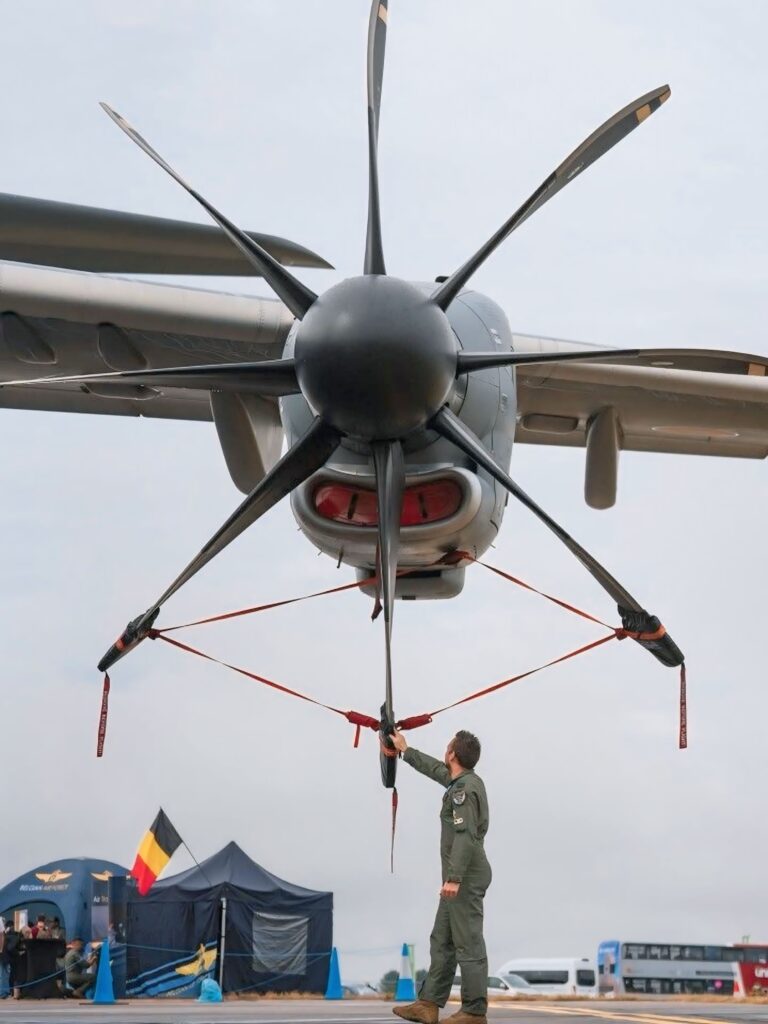
The Airbus A400M Atlas is a versatile military transport aircraft designed to bridge the gap between tactical airlifters like the C-130 Hercules and larger strategic transporters such as the C-17 Globemaster III. Developed by Airbus Defence and Space, the A400M combines long-range, heavy-lift capabilities with the ability to operate from short and unprepared runways, making it one of the most capable and flexible airlifters in the world.
The A400M project began in the 1980s as several European nations sought a replacement for aging transport fleets. Airbus officially launched the program in 2003, with the first flight taking place in 2009 and the first delivery in 2013 to the French Air Force. The aircraft is now in service with multiple countries, including the United Kingdom, Germany, Spain, France, and Malaysia.
Powered by four Europrop International TP400-D6 turboprop engines—the most powerful turboprops ever built in the West—the A400M offers excellent performance. Each engine produces over 11,000 shaft horsepower, allowing the aircraft to reach a maximum speed of around 780 km/h (485 mph) and cruise efficiently at high altitudes. It has a range of approximately 3,300 kilometers with a full 30-ton payload and can extend to over 8,000 kilometers with lighter loads or additional fuel tanks.
One of the key strengths of the A400M is its ability to perform multiple roles. Primarily designed for airlift missions, it can transport heavy vehicles, troops, and supplies to forward areas. Its large cargo hold—measuring 17.7 meters long, 4 meters wide, and 3.85 meters high—can accommodate armored vehicles, helicopters, or up to 116 fully equipped soldiers. The aircraft is equipped with an advanced fly-by-wire system and a glass cockpit, making it easier to handle under demanding operational conditions.
In addition to its transport role, the A400M can perform aerial refueling missions using wing-mounted pods or a centerline hose and drum unit. It can refuel both fast jets and helicopters, and it can itself be refueled in flight. The aircraft also supports medical evacuation (MEDEVAC) operations, capable of carrying up to 66 stretchers and 25 medical attendants, transforming it into a flying hospital when needed.
Operationally, the A400M excels in rough environments. Its reinforced landing gear and high-mounted wings allow it to take off and land on short, unpaved runways, such as grass, sand, or gravel strips as short as 750 meters. This capability is vital for humanitarian missions, disaster relief, and operations in remote or combat zones where infrastructure is limited.
Despite early production delays and cost overruns, the A400M has proven its value through real-world operations. It has been used extensively for military deployments, pandemic relief flights, and disaster response missions across the globe.
Today, the Airbus A400M Atlas stands as a symbol of European cooperation and engineering excellence. Combining speed, range, payload, and versatility, it has become a cornerstone of modern air mobility and a critical asset for the armed forces that operate it.


